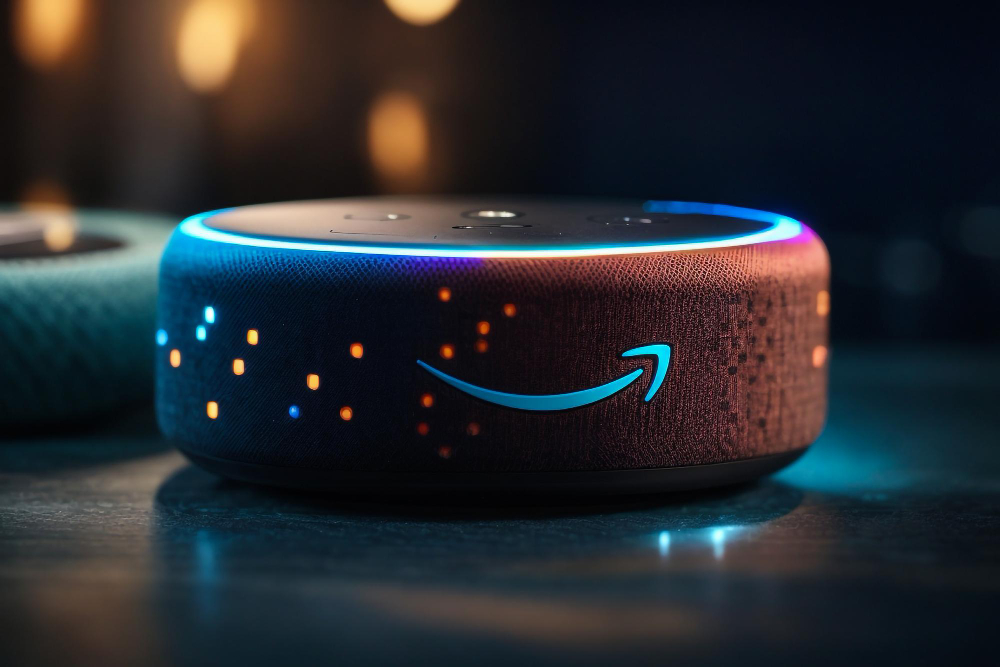By Jack Lindberg, The Mars Agency
Amazon’s recent unveiling of Rufus, a generative AI-powered chat shopping experience, marks a pivotal shift in the retail and e-commerce landscape. This innovation, detailed on Amazon’s news platform, comes on the heels of Walmart’s introduction of similar genAI search and AI replenishment features at this year’s CES conference.
These advancements signal a new era in online shopping, transforming the way consumers interact with retailers and altering the strategic approach brands must adopt to thrive in this evolving digital marketplace.

Rufus, Amazon’s new AI shopping assistant
The Rufus AI shopping assistant can answer queries about products, make recommendations, and help with product discovery by drawing information from Amazon’s product catalog and the internet at large. Initially available in beta to a limited number of U.S. customers, Rufus will gradually be offered to more users.
Why Amazon’s new AI is a pup named Rufus
A lot of people may question where Rufus got its name and why they chose a cute corgi to be the mascot. Rufus was a pet that belonged to Amazon’s former editor-in-chief and principal engineer. For many years, Rufus was a fixture in the office and could be found trotting down the halls or chasing a tennis ball. Once Rufus was discovered by Amazon customers, they adopted him as part of the family by frequently sending him gifts. Rufus will forever be remembered as a quintessential part of the Amazon family by providing the name and persona for their next-gen search AI.
Generative AI and the Evolution of the Online Retail Shopping Experience
Generative AI is ushering in a dynamic, interactive shopping experience that significantly diverges from traditional search-based models. The technology empowers shoppers to find products more intuitively, using natural language queries that reflect their preferences, needs, and intentions.
Unlike traditional search algorithms, which rely heavily on keywords and predefined filters, generative AI understands the context and nuances of user requests, offering personalized recommendations and solutions. This not only enhances the consumer experience by making shopping more efficient and enjoyable, it also benefits retailers by improving on-site conversion rates and overall customer satisfaction.
The Challenge with Generative AI Search for Brands
This shift in search functionality presents a new set of challenges for brands accustomed to the traditional search algorithm landscape. Search algorithms and large language models (LLMs) like those powering Rufus and Walmart’s generative AI search function quite differently. While search algorithms prioritize content based on keyword relevance, LLMs understand and interpret the semantics of queries, generating responses that aim to match the user’s intent.
This fundamental difference means that brands can no longer rely solely on keyword optimization and SEO to ensure visibility.
Moreover, Amazon and Walmart’s reticence to disclose the specifics of ranking within LLM-generated results adds another layer of complexity. Without clear guidance on optimizing for LLM searches, brands will be navigating uncharted waters, trying to understand how to maintain or improve their visibility.
The current absence of sponsored placements within these LLM search results further complicates the landscape for brands. Traditionally, paid search has been a reliable strategy for enhancing visibility on e-commerce platforms. The introduction of generative AI without a corresponding mechanism for sponsored results disrupts this model, leaving brands uncertain about how to effectively reach their target audience.
Potential consumer adoption challenges with Rufus

As with most new technology, user adoption could be tricky. For the last 25 years, consumers have grown accustomed to using legacy keyword-based search engines. However intuitive a prompt-based search engine may seem, there will still be a learning curve for many. Luckily, Amazon has been unconsciously training its customers for years with the Alexa voice interface. Just as you would ask Alexa about the weather or a trivia question, consumers will be able to get meaningful product recommendations from questions in plain language.
Generative AI’s Impact on the Future of Retail Media and Advertising
The transition to generative AI-powered shopping experiences necessitates a reevaluation of advertising strategies in the retail sector. As the digital shelf becomes more personalized and condensed, the emphasis will shift from broad-based search visibility to targeted, audience-specific engagement. This evolution suggests a future where advertising is deeply integrated with genAI, leveraging retailer data clean rooms to create highly personalized ads that resonate with individual shoppers based on their behaviors, preferences, and purchase history.
For Amazon marketers and brands, this means preparing for a post-search paradigm where success hinges on understanding and leveraging AI-driven insights to craft marketing strategies that are both highly personalized and effective at engaging the intended audience.

Generative AI and how it’s being applied to retail search
Generative AI has been a huge buzzword for the last couple of years, but what is it exactly and how can it be applied to shopping on Amazon? In simple terms, generative AII is a type of artificial intelligence with the ability to generate new content or information instead of being programmed explicitly for a specific task. The AI consumes data from a large, predefined dataset and uses that to generate original content. The most well-known example of this is the open ChatGPT platform, which analyzes information found across the internet to return answers to the user’s questions.
Rufus is trained on Amazon’s proprietary dataset as well as information found publicly on the internet. Imagine being able to ask any question, about any items available on Amazon, and receiving an intelligent answer. For example, you could ask what shampoo would be best for a child with dandruff living in dry conditions, and Rufus can provide recommendations for products based on those very specific inputs. Compared with traditional search engines, it’s like going to The Home Depot and getting help from a plumbing expert rather than visiting the retailer’s app to search based on keywords.
Getting the most from Rufus with expert prompts
A prompt is simply a command you give the AI — or, put a better way, the question you ask the AI. The better the question asked, the better the answer you should receive. Luckily, there are some tricks you can use to get the best response. Here are a few.
- Be clear and specific: The AI doesn’t need elaborate questions. Clearly state your request by providing specific details and context.
- Use complete questions: When working with genAI, don’t simply add keywords like you would with a standard search engine. Make sure to create prompts with complete sentences, including all the information needed to receive the best answer. For example, instead of typing “bathroom sink faucet”, ask “Show me the bathroom sink faucets that come in rubbed bronze, have high clearance and cost less than $100.” By asking that more specific question, you will save countless hours of filtering and searching through Amazon’s many options.
- Refine your prompts: If your first prompt isn’t successful, don’t be afraid to refine it until you get an acceptable response. Add additional context or examples to help get a clearer answer.
Predictions for Rufus
The introduction of Rufus by Amazon and the generative AI features unveiled by Walmart signify a transformative phase in retail and e-commerce. These innovations promise to improve the shopping experience, making it better aligned with individual consumer needs.
However, they also challenge brands to adapt to a rapidly changing digital ecosystem, where visibility and engagement depend on mastering new technologies and embracing the nuances of AI-driven interaction. As the landscape evolves, the ability to innovate and adapt will be paramount for brands aiming to thrive in the new era of generative AI retail.